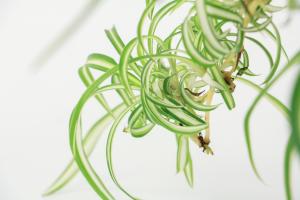How to Plant Palm Trees in Florida
Florida is famous for its palm trees, and if you want to add some tropical appeal to your landscape, planting palm trees is the way to go. Palm trees can grow up to 100 feet tall, but don't worry; you can easily find species that are suitable for smaller yards. Here's what you need to know about planting palm trees in Florida.
Choose the Right Species
The first step in planting palm trees in Florida is to choose the right species. There are dozens of palm tree species to choose from, so it's important to consider your needs and goals before making a selection. Some of the most popular palm tree species in Florida include:
Areca Palm
Bismarck Palm
Cabbage Palm
Coconut Palm
Queen Palm
Sabal Palm
Sago Palm
Triangle Palm
Each species has its unique features, such as the size of the leaves or the color of the trunk. One species may be better suited for your yard than another, so take your time and choose wisely.
Prepare the Soil
The second step is to prepare the soil. Palm trees grow best in well-drained soil that is rich in nutrients. If your soil is sandy, you may need to add compost, manure, or peat moss to improve its structure. If your soil is clayey, you may need to add sand, gravel, or perlite to improve drainage.
Before planting your palm tree, you may want to test your soil to determine its pH level. Most palm trees prefer slightly acidic soil, around pH 6-7. If your soil is too acidic or alkaline, you may need to adjust it accordingly.
Plant the Tree
The third step is to plant the tree. Dig a hole that is two to three times wider than the root ball but no deeper than the root ball. Make sure to leave the top of the root ball level with the soil line. If you bury the tree too deep, you may cause root rot or other problems.
Before planting the tree, you may want to trim any brown or yellow leaves and remove any circling roots. However, be careful not to damage any healthy roots or the tree's main stem. After placing the tree in the hole, backfill it with soil and gently tamp it down. Water the tree thoroughly to settle the soil and remove any air pockets.
Maintain the Tree
After planting the tree, you will need to maintain it to ensure it thrives. Here are some tips:
Water the tree deeply and regularly, especially during the first few months. Avoid overwatering, which can cause root rot.
Fertilize the tree with a balanced fertilizer every three to four months. Follow the manufacturer's instructions carefully, as too much fertilizer can burn the tree's roots.
Prune the tree as needed to remove dead or damaged fronds, but don't remove more than one-third of the fronds at a time.
Protect the tree from extreme temperatures, such as frost or heatwaves, with mulch or frost cloth.
Check the tree regularly for pests or diseases, such as scale insects or leaf spot, and take action if necessary.
Conclusion
Planting palm trees in Florida is a great way to add some tropical flair to your landscape. Choose the right species, prepare the soil, plant the tree, and maintain it properly, and you will have a beautiful, healthy palm tree for years to come.

 how many times do yo...
how many times do yo... how many planted tre...
how many planted tre... how many pine trees ...
how many pine trees ... how many pecan trees...
how many pecan trees... how many plants comp...
how many plants comp... how many plants can ...
how many plants can ... how many plants and ...
how many plants and ... how many pepper plan...
how many pepper plan...
































